Tracking the popularity and outcomes of all bioRxiv preprints
- PMID: 31017570
- PMCID: PMC6510536
- DOI: 10.7554/eLife.45133
Tracking the popularity and outcomes of all bioRxiv preprints
Abstract
The growth of preprints in the life sciences has been reported widely and is driving policy changes for journals and funders, but little quantitative information has been published about preprint usage. Here, we report how we collected and analyzed data on all 37,648 preprints uploaded to bioRxiv.org, the largest biology-focused preprint server, in its first five years. The rate of preprint uploads to bioRxiv continues to grow (exceeding 2,100 in October 2018), as does the number of downloads (1.1 million in October 2018). We also find that two-thirds of preprints posted before 2017 were later published in peer-reviewed journals, and find a relationship between the number of downloads a preprint has received and the impact factor of the journal in which it is published. We also describe Rxivist.org, a web application that provides multiple ways to interact with preprint metadata.
Keywords: bibliometrics; bioRxiv; meta-research; none; preprints; publishing; web scraping.
© 2019, Abdill and Blekhman.
Conflict of interest statement
RA, RB No competing interests declared
Figures
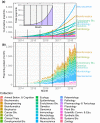

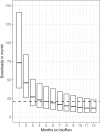
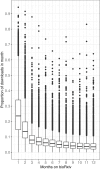
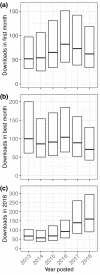
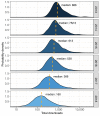




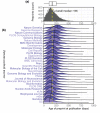
References
-
- Aksnes DW. When different persons have an identical author name. How frequent are homonyms? Journal of the American Society for Information Science and Technology. 2008;59:838–841. doi: 10.1002/asi.20788. - DOI
-
- Altmetric Support How is the altmetric attention score calculated? [November 30, 2018];2018 https://help.altmetric.com/support/solutions/articles/6000060969-how-is-...
-
- Anaya J. 674d5aaPrePubMed: Analyses. 2018 https://github.com/OmnesRes/prepub/tree/master/analyses/preprint_data.txt
-
- Berg JM, Bhalla N, Bourne PE, Chalfie M, Drubin DG, Fraser JS, Greider CW, Hendricks M, Jones C, Kiley R, King S, Kirschner MW, Krumholz HM, Lehmann R, Leptin M, Pulverer B, Rosenzweig B, Spiro JE, Stebbins M, Strasser C, Swaminathan S, Turner P, Vale RD, VijayRaghavan K, Wolberger C. Preprints for the life sciences. Science. 2016;352:899–901. doi: 10.1126/science.aaf9133. - DOI - PubMed
Publication types
MeSH terms
Grants and funding
LinkOut - more resources
Full Text Sources

